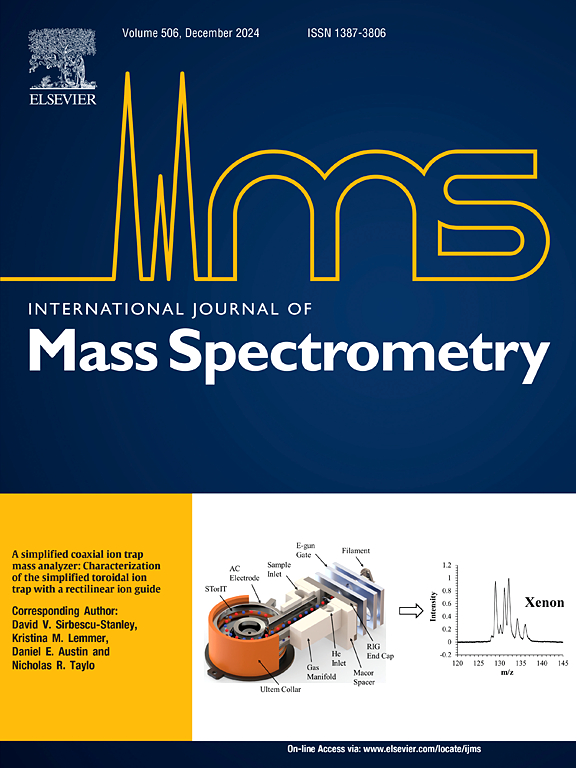Rapid and accurate identification of microorganisms using ion mobility–mass spectrometry
IF 1.7
3区 化学
Q3 PHYSICS, ATOMIC, MOLECULAR & CHEMICAL
引用次数: 0
Abstract
Accurate identification of microorganisms to the strain and substrain levels in clinical and environmental samples is essential to provide an appropriate antibiotherapy to the patients and reduce the prescription of broad-spectrum antimicrobials to minimize antibiotic resistance. Unfortunately, the current diagnosis methods are often slow, expensive, or laborious, which limits their use in resource-limited regions. Therefore, there is a strong unmet need for new technologies that can rapidly identify microorganisms in complex samples to complement the existing commercially available technologies. This Young Scientist Perspective demonstrates the value of combining the attributes of ion mobility-mass spectrometry and ambient ionization, enabling rapid and accurate discrimination of bacteria to the species level after only a 4-h culturing period and showing that various bacterial species can have different isomers and conformers of their biomarkers. However, to discriminate closely-related bacterial strains, we needed to include other separation techniques in our workflow, such as liquid chromatography. Also, we utilized whole organism fingerprints, which include metabolites, lipids, and peptides, using our optimized workflow and machine learning to analyze a wide set of E. coli strains in artificially contaminated urine samples. Moreover, the various challenges for routine identification of microorganisms using our optimized techniques in medical, environmental, and security fields and future outlooks are discussed.

离子迁移-质谱法快速准确地鉴定微生物
准确识别临床和环境样本中的菌株和亚菌株水平的微生物对于为患者提供适当的抗生素治疗和减少广谱抗菌药物的处方以最大限度地减少抗生素耐药性至关重要。不幸的是,目前的诊断方法往往缓慢、昂贵或费力,这限制了它们在资源有限地区的使用。因此,迫切需要能够快速识别复杂样品中的微生物的新技术,以补充现有的商业技术。这一年轻科学家的观点证明了结合离子迁移-质谱和环境电离属性的价值,使细菌在仅培养4小时后就能快速准确地区分到物种水平,并表明不同的细菌物种可以具有不同的异构体和生物标志物的构象。然而,为了区分密切相关的细菌菌株,我们需要在我们的工作流程中包括其他分离技术,例如液相色谱。此外,我们利用整个生物体指纹,包括代谢物,脂质和肽,使用我们优化的工作流程和机器学习来分析人工污染尿液样本中的大肠杆菌菌株。此外,本文还讨论了利用我们的优化技术在医疗、环境和安全领域进行微生物常规鉴定所面临的各种挑战以及未来的展望。
本文章由计算机程序翻译,如有差异,请以英文原文为准。
求助全文
约1分钟内获得全文
求助全文
来源期刊
CiteScore
3.60
自引率
5.60%
发文量
145
审稿时长
71 days
期刊介绍:
The journal invites papers that advance the field of mass spectrometry by exploring fundamental aspects of ion processes using both the experimental and theoretical approaches, developing new instrumentation and experimental strategies for chemical analysis using mass spectrometry, developing new computational strategies for data interpretation and integration, reporting new applications of mass spectrometry and hyphenated techniques in biology, chemistry, geology, and physics.
Papers, in which standard mass spectrometry techniques are used for analysis will not be considered.
IJMS publishes full-length articles, short communications, reviews, and feature articles including young scientist features.

 求助内容:
求助内容: 应助结果提醒方式:
应助结果提醒方式:


